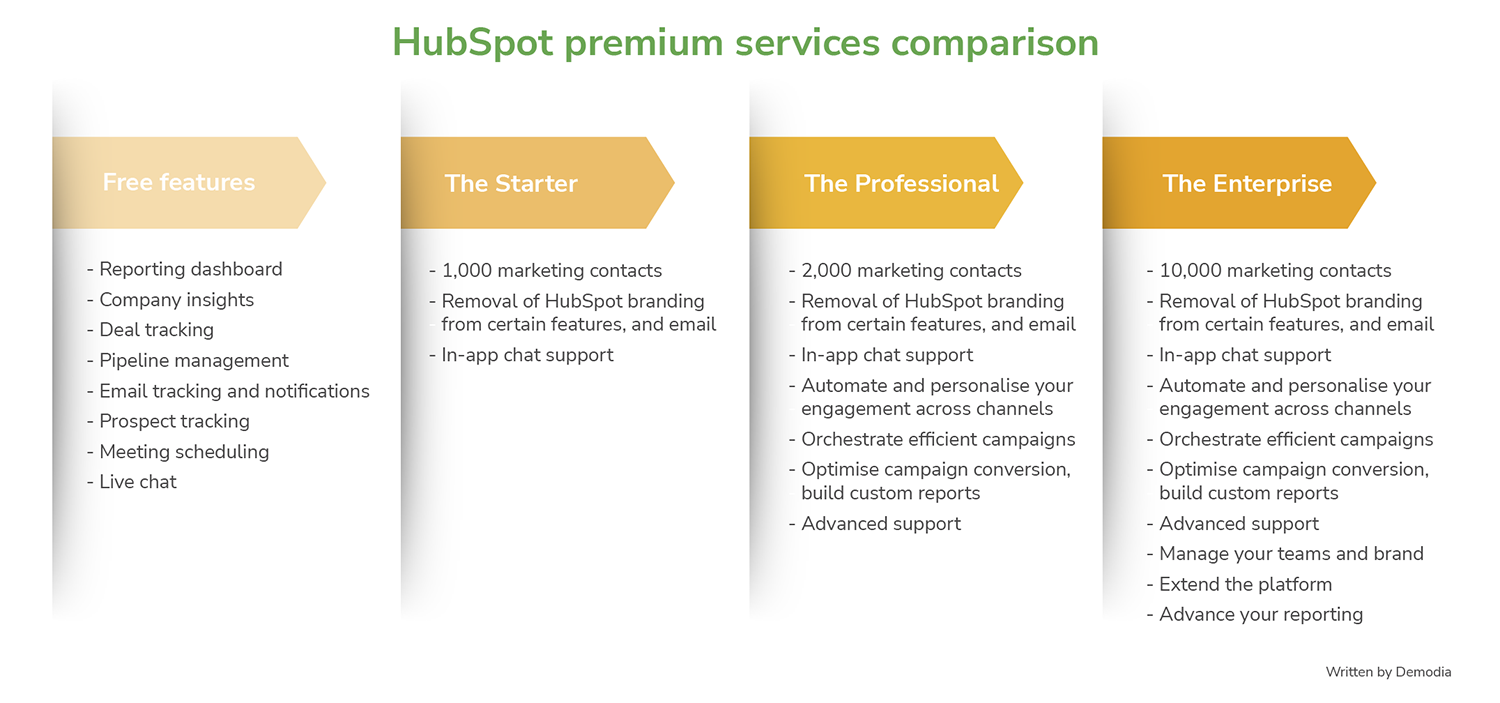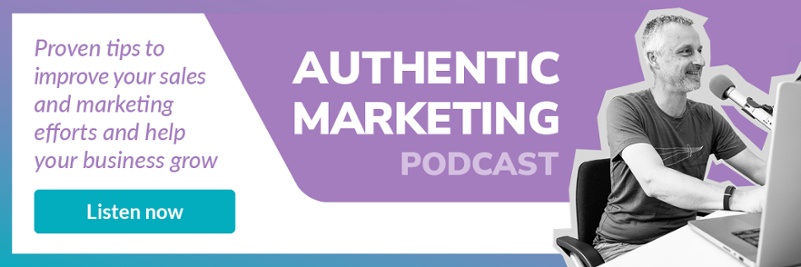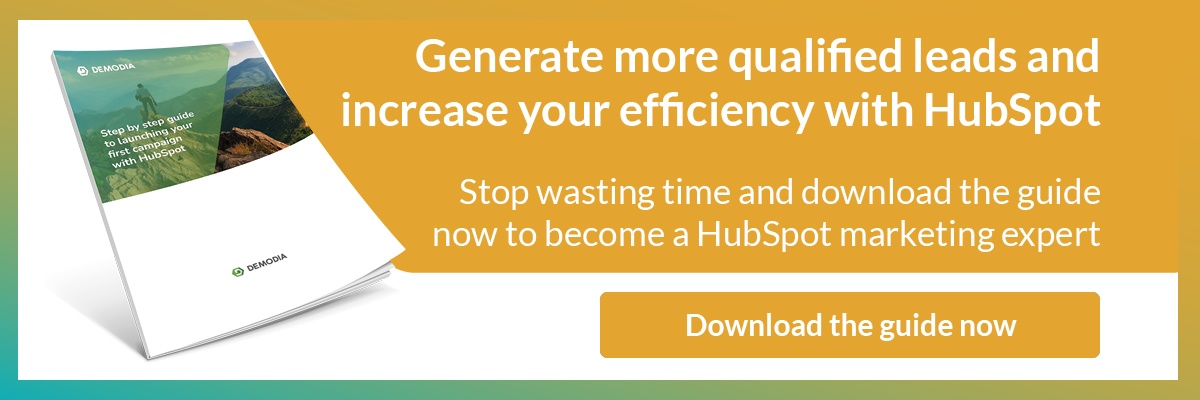
Like everything, running a business is challenging, and it's not unusual to feel overwhelmed and desperate for a way out. Success stories can be inspiring and help focus our efforts in the right direction. There's no denying that HubSpot is a success - but how did they get where they are today? Let's explore the history of HubSpot, from its early days at the Massachusetts Institute of Technology to where it stands today.
Download now: Free step-by-step guide to launching your first campaign with HubSpot
HubSpot is the company that coined "inbound marketing"
From its humble beginnings at a university to generating revenues of up to $1.7 billion 19 years later, HubSpot’s story is one that is worthy of being examined. Where did they come from, and how did they do it?
Love them, hate them, HubSpot has revolutionised the way we approach marketing, customer service and communication itself. Starting as a simple concept shared between friends, the organisation has grown to over 7,433 employees worldwide.
Early beginnings
In 2004, 37-year-old Brian Halligan met a fellow student named Dharmesh Shah at the Massachusetts Institute of Technology (MIT). Amongst other things, they discussed the potential of technology to enable smaller companies to compete with larger companies.
The idea was simple - since mass cold calling, outbound marketing, and advertising were vastly expensive, smaller start-ups could rarely compete in a numbers game against the established, larger companies. However, the internet quickly changed the game from one of the numbers to one of engagement.
Both Brian and Dharmesh agreed that the way people shopped and learned what they liked was changing because of the amount of time they spent on the web. In addition to this, technology was enabling people to tune out traditional marketing. Television advertising was being abandoned in favour of streaming and online video. Music was being downloaded instead of listened to on the radio. People were simply relying on the opinions of their peers rather than blindly believing in traditional marketing.
If companies wanted to compete, they needed to get consumers to market for them rather than their team of advertisers. Neither Brian nor Dharmesh knew it yet, but they had formed the basis of inbound marketing - and the seeds of HubSpot were sewn.
The founding of HubSpot
A year later, in 2005, Halligan and Shah put their new ideas of engagement over advertising to paper and created a solution for businesses to reach and interact with customers. They entered this solution into MIT’s $50,000 business plan competition and were semi-finalists.
When both men graduated later that year, Halligan and Shah dedicated themselves to the solution. They created a blog to showcase their ideas and later built an inbound community to help small businesses succeed with inbound marketing. They called it ‘HubSpot’.
The seeds of success
As the community grew, Halligan and Shah began to package the core ideas of their solution - social media engagement, website optimisation and engagement tactics - for businesses to use. In 2008, Halligan hired a sales representative to begin seeking out and selling these packages to third parties. One of these parties was Schwartz Communications, a Boston-based PR agency.
Schwartz Communications soon saw results. In 2009 Schwartz’s revenues from digital-based services grew by 300%. Based on this success, Schwartz was the example HubSpot needed to prove the value of social media, SEO and detailed visitor engagement reports, and soon after, Forrester noted that HubSpot offered something unique.
By the end of 2010, the company’s revenue had grown to $15.6 million - a far cry from its 2007 figure of $255,000.
Building on the momentum
2011 was the year that HubSpot gained the momentum and fame it needed to become the multinational organisation it is today. Halligan received the Ernst & Young Entrepreneur of the Year award, HubSpot acquired an app store for Twitter known as Oneforty, and HubSpot gained over $65 million in venture capital investment.
By now, HubSpot boasted over 5,000 subscribers, and building upon the buzz generated by Halligan and Shah’s book “Inbound Marketing”, they began to change their focus. HubSpot gradually moved upmarket to target and serve larger businesses of up to 1,000 employees.
In 2013, HubSpot opened its first international office in Dublin, Ireland, and listed itself as a public offering the following year.
A marketing mega-success
Within ten years since its founding, HubSpot has become a commonplace topic for agencies and enterprises worldwide. In 2016, the revenue of HubSpot was reported at $271 million and had 23,226 customers who used the solution.
In 2017, HubSpot acquired Kemvi, a machine learning and AI company built to assist sales teams in understanding their customers more. HubSpot’s last revenue number last reported was at $1.7 billion in 2022.
HubSpot Product Timeline
Since its inception 17 years ago, HubSpot has introduced many products to the market. Here’s an outline of HubSpot’s product releases.
- 2006 - HubSpot was founded.
- 2008 - The first HubSpot solutions were sold in 2008.
- 2010 - HubSpot acquires Oneforty and releases multiple free tools as inbound marketing assets.
- 2011 - HubSpot releases a Twitter tracking feature.
- 2014 - Hubspot launches HubSpot CRM Free
- 2016 - Launch of HubSpot Academy, an online digital marketing training platform.
- 2017 - HubSpot acquires Kemvi and introduces machine learning and AI to their solution.
- 2018 - HubSpot integrates Taboola, a global pay-per-click native ad network.
- 2019 - HubSpot acquires PieSync, a customer data synchronisation platform.
- 2021 - HubSpot announces it will be acquiring The Hustle, a content and email newsletter company focused on small business owners and entrepreneurs.
- 2021 - HubSpot partnered with Envato to launch hundreds of high-quality CMS Hub templates.
Why use HubSpot?
HubSpot’s CRM (customer relationship management software) is a platform where companies can organise their contacts and keep track of every conversation they have with them. Initially, HubSpot’s CRM was primarily for marketers, but now it is more robust. Instead of functioning primarily for the marketing team, the existing CRM looks to help every customer-facing team in a given company.
HubSpot offers many free features that help with the effective workings of your marketing strategies. However, premium versions of these features can further your marketing planning - including enterprise software for marketing, sales, customer service, content management, and operations. Not to mention, HubSpot offers excellent deals on its premium services.

Begin your own success story
HubSpot’s rapid growth and success only further demonstrate the potency and relevancy of digital and inbound marketing. The fact remains that if you want to gain customers, generate substantial revenue and build a reputation based on customer service, you have to build your marketing around your customers and develop your brand story around them.
Inbound marketing and B2B marketing automation are just two of the approaches you can take towards beginning your own success story. Demodia, as a small business consultant, has been perfecting these approaches since the dawn of digital marketing.
If you want to gain a structured demand generation service based on your specific needs, challenges and circumstances, contact Demodia today and start establishing your digital marketing success.




